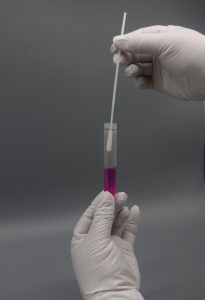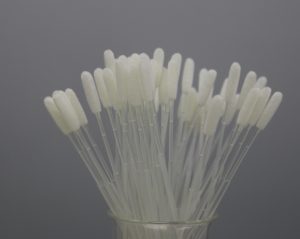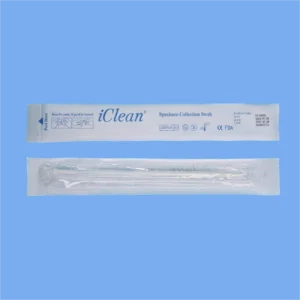Detecting Mycoplasma with a swab typically involves several steps, including sample collection, DNA extraction, and molecular testing. Here’s a general outline of the process:
Materials Needed:
- Sterile swabs
- Transport medium (e.g., PBS or specific Mycoplasma transport medium)
- DNA extraction kit
- PCR reagents and equipment
- Primers specific for Mycoplasma detection
- Gel electrophoresis apparatus or real-time PCR machine
Step-by-Step Procedure:
1. Sample Collection:
- Preparation:
- Wear sterile gloves and use aseptic techniques.
- Ensure the swabs and transport medium are sterile and ready for use.
- Swabbing:
- Gently rub the swab on the suspected area (e.g., cell culture, throat, urogenital area) to collect the sample.
- Place the swab into the transport medium immediately to preserve the sample.
2. DNA Extraction:
- Lysis:
- Transfer the swab to a tube containing lysis buffer from the DNA extraction kit.
- Incubate as per the kit instructions to lyse the cells and release DNA.
- Purification:
- Follow the DNA extraction kit protocol to purify the DNA. This usually involves binding the DNA to a column, washing away contaminants, and eluting the purified DNA.
3. PCR (Polymerase Chain Reaction):
- Prepare PCR Mix:
- Prepare a master mix containing:
- DNA template (from the extraction step)
- Mycoplasma-specific primers
- dNTPs
- Taq polymerase
- Buffer solution
- Amplification:
- Set up the PCR machine with the appropriate cycling conditions (typically initial denaturation, followed by cycles of denaturation, annealing, and extension).
- Detection:
- For endpoint PCR, run the amplified products on an agarose gel and stain with a DNA-binding dye (e.g., ethidium bromide) to visualize bands under UV light.
- For real-time PCR, monitor the amplification in real-time using a fluorescent dye or probe.
Interpretation of Results:
- Positive Result:
- Presence of specific bands in gel electrophoresis or a positive signal in real-time PCR indicates the presence of Mycoplasma DNA.
- Negative Result:
- Absence of specific bands or no amplification signal suggests the absence of Mycoplasma DNA.
Additional Considerations:
- Controls:
- Include positive and negative controls in your PCR to validate the results.
- Contamination Prevention:
- Use separate areas for sample preparation, PCR setup, and analysis to avoid contamination.
- Regularly clean work surfaces and equipment with DNA-degrading agents.
This process ensures accurate detection of Mycoplasma in your samples. For clinical applications, always follow the guidelines and protocols recommended by relevant health authorities and institutions.
 A professional supplier of swabs
A professional supplier of swabs




